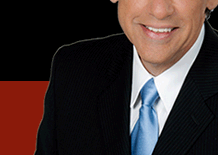|
Question
(your) Authority
As we examine the structure of a good interview, the
inevitable issue of how you organize your encounter has to
be faced. This is always a delicate trade off between
an
overly organized and formal arrangement and an interview
that simply wanders all over the place. Of course, how
you
structure your interview depends heavily on whether or not
the interview will be a part of a larger, edited piece or
a
stand alone feature. Of course, in either case, your
audience is the ultimate focus of your interview, but in the
interview that will be part of a large piece, you have
probably chosen your subject for a specific point of view
or
opinion, and in a sense, your interview has to be a bit more
structured in order to get your subject to comment on an
aspect of your larger story. You can’t quite tell them
what
you want them to say, but you do know where you want the
interview to go, and you don’t want to waste a lot of tape
getting there.
The reality is that you will undoubtedly need to ask some
warm-up questions to both relax your guest and get them in
the general frame of mind of what your story is about.
In
this situation, what you really want is multiple versions
of
the same take, or the same question, with variations.
It
may be only one or two questions, asked over and over,
trying to keep them fresh and unusual. This will give
the
editor of the piece a range of choices to use for the final
piece. As an interviewer, you need to remain spontaneous
sounding, but at the same time really exploring the one or
two points you need for your final piece.
The feature interview is on one hand harder - you have a
bigger chunk of time to kill - and easier, since it is not
so important that you get some specific answer, but rather
give your audience a deeper understanding of the person you
are interviewing.
In your feature interview, it is wise to arrange your
questions in order of most important to least important, so
that if your interview is cut in length, you will have the
most important questions answered up front. This doesn’t
mean that the last of the questions should be dull or
insipid, just the softer, more ‘touchy-feely’ questions
which aren’t so reliant on facts.
The one exception to this rule of most important to least
important arrangement of questions is when your feature
interview unrolls in multiple parts, divided by breaks.
In
this case, save your second (and third, if necessary) most
important question to tease when you come back from the
break. In this way, you can invite your audience to
remain
with you for good, juicy questions when you return.
It
could sound something like this: “when we come back,
writer
Marty Link will talk about his childhood in West Virginia
and the experience that changed his life...we’ll be right
back...”
You will want to save important questions to tease coming
back from those breaks - usually what you might consider
your second, third, or subsequently more important
questions.
The bottom line is that while you want any interview to
sound fresh and unrehearsed, you may have different needs
for each interview. Think it through in advance and
you
(and your editor!) will be happier for the effort.
You know the drill. Breathe deeply...
|

















